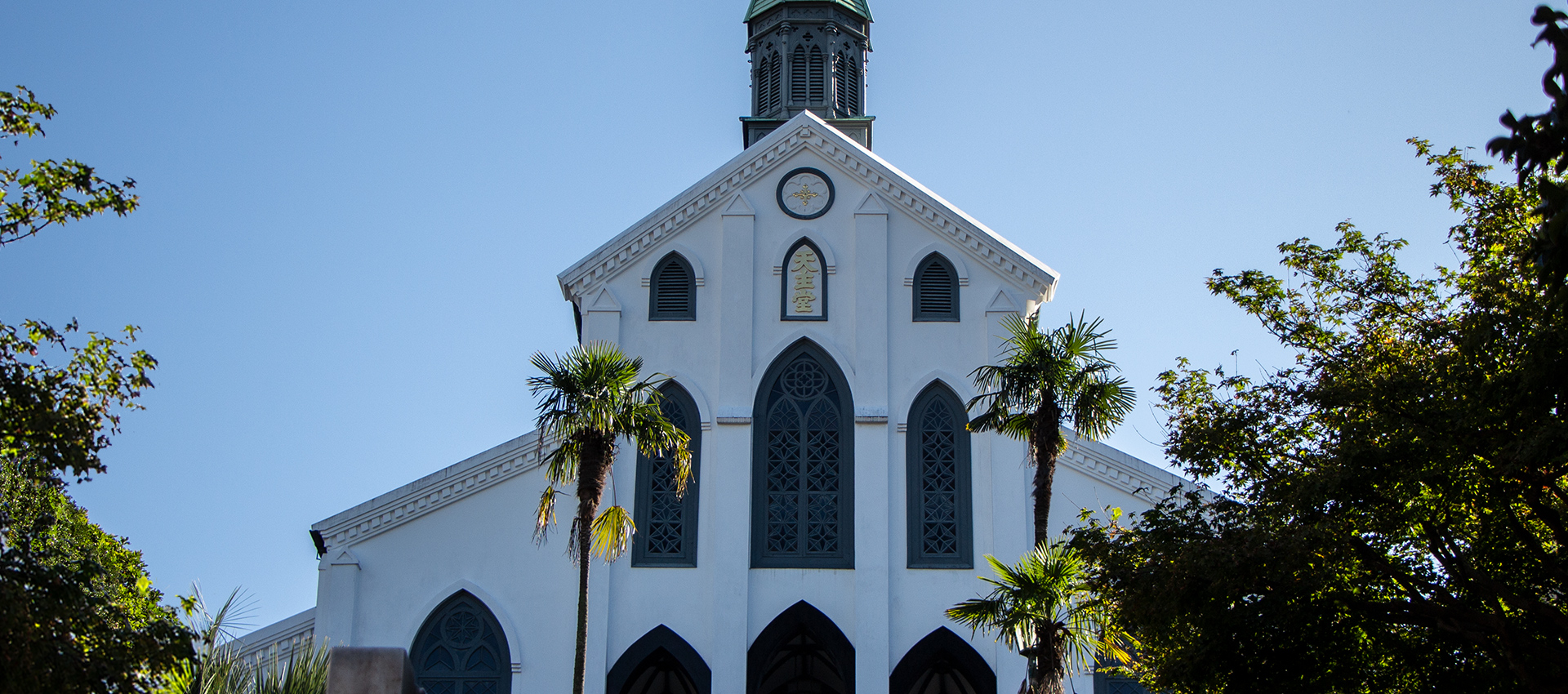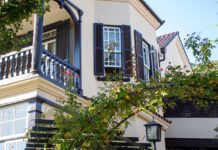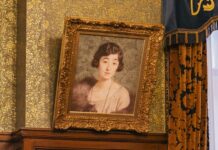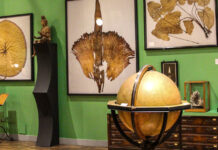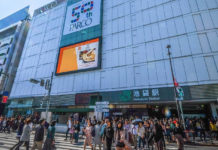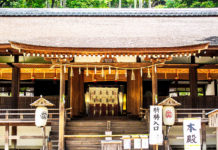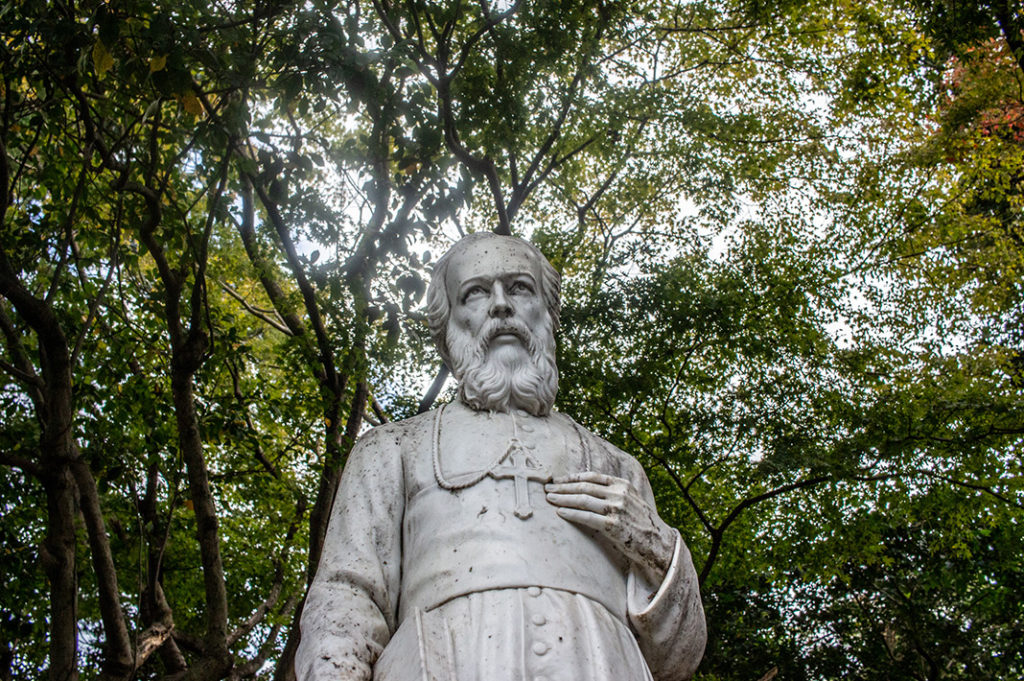
Depending on where you’re from, it’s probably not a big deal to come across a Catholic church in your travels. In Japan, though, where just 1% of the population identifies as Christian, it’s kind of rare. While every neighbourhood has its own shrine or temple or both, churches are few and far between. The ones found in Nagasaki carry a little extra weight as over four centuries of turbulence, secrecy, torture and death paved the way for Christianity throughout the country. One of the most significant landmarks in Nagasaki’s story of Christianity, and a must-see, is Oura Catholic Church. As well as being a National Treasure, the church is one of Nagasaki’s most popular attractions, drawing many visitors every year.
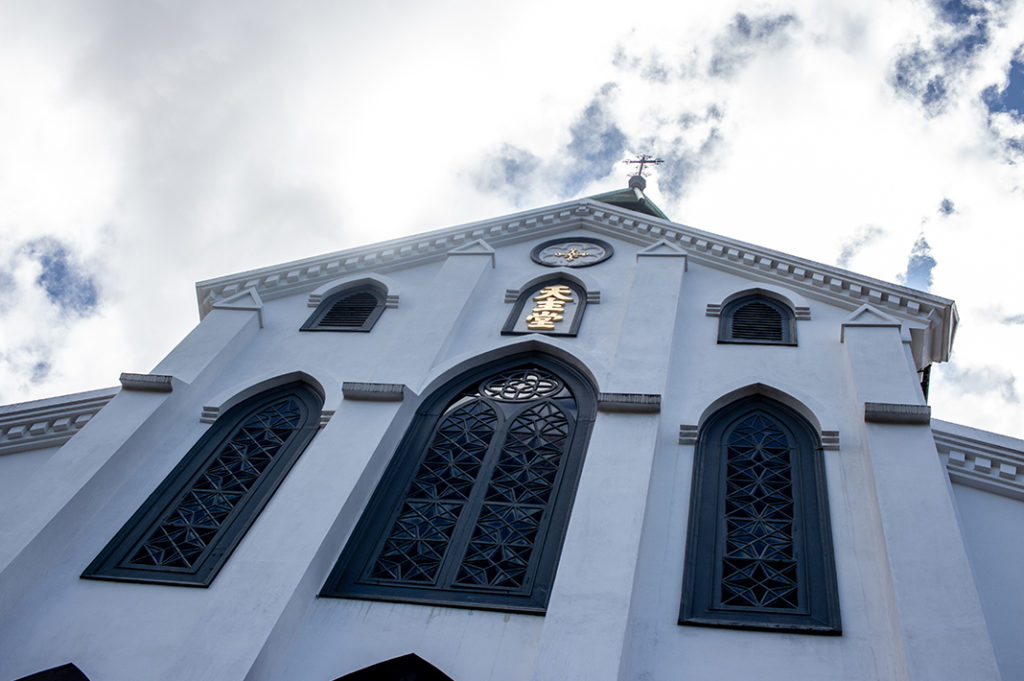
Oura Catholic Church and Christianity in Nagasaki
Built by French missionaries in 1864, Oura Church is the oldest extant Christian building in all of Japan. It’s worth noting that it wasn’t the first church in Nagasaki – many were destroyed in the 1600s after the ban on Christianity – just the first in a long while.
The church was built in honour of the Twenty-six Martyrs of Japan, nine European priests and seventeen Japanese Christians who were brutally crucified for their beliefs in 1597. After this event, and the demolition of all churches, many devotees began to hide their faith in order to stay alive. Stories of the ‘hidden Christians’ and their brutal treatment can be found in Shūsaku Endō’s acclaimed novel Silence, which has been adapted to film by Martin Scorsese.
Oura Church was built in Nagasaki’s foreign settlement, the hilly Minamiyama temachi district. As there was still a ban on Christianity at the time of construction, the foreign audience was the only viable one. Perched on the hill, Oura faces Nishizaka Hill, where the 26 Martyrs lost their lives.
Soon after Oura Church was built, descendants of the hidden Christians began to come forward, recognising it as a safe haven for their beliefs. More and more appeared and once the community grew to the thousands, word spread to the Vatican. The Pope declared it “the miracle of the Orient.” Unfortunately, it would be almost a decade of brutal persecution before the ban was finally lifted in 1873.
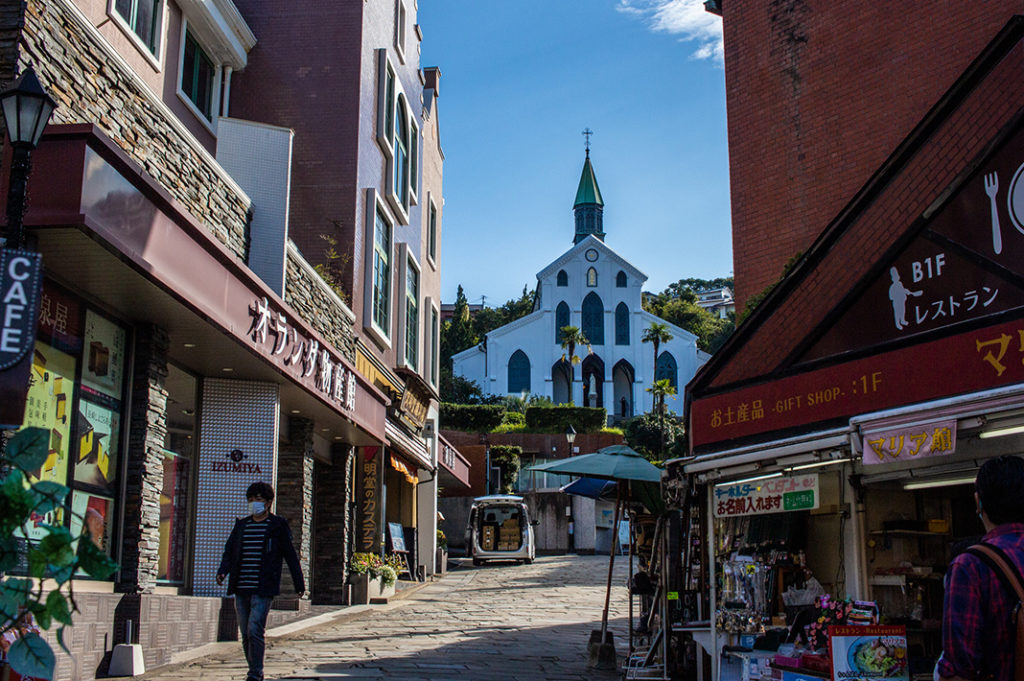
Visiting Oura Church today
While Oura Church is a tourist attraction, it still functions as a church with daily masses and special events. The cobbled streets leading up to it are filled with souvenir stores and make for a pleasant daytime stroll. At the base of the steps, the bright white church towers impressively overhead, with a lush garden lining the path. The views from the top are something to behold, facing the direction of Nishizaka Hill.
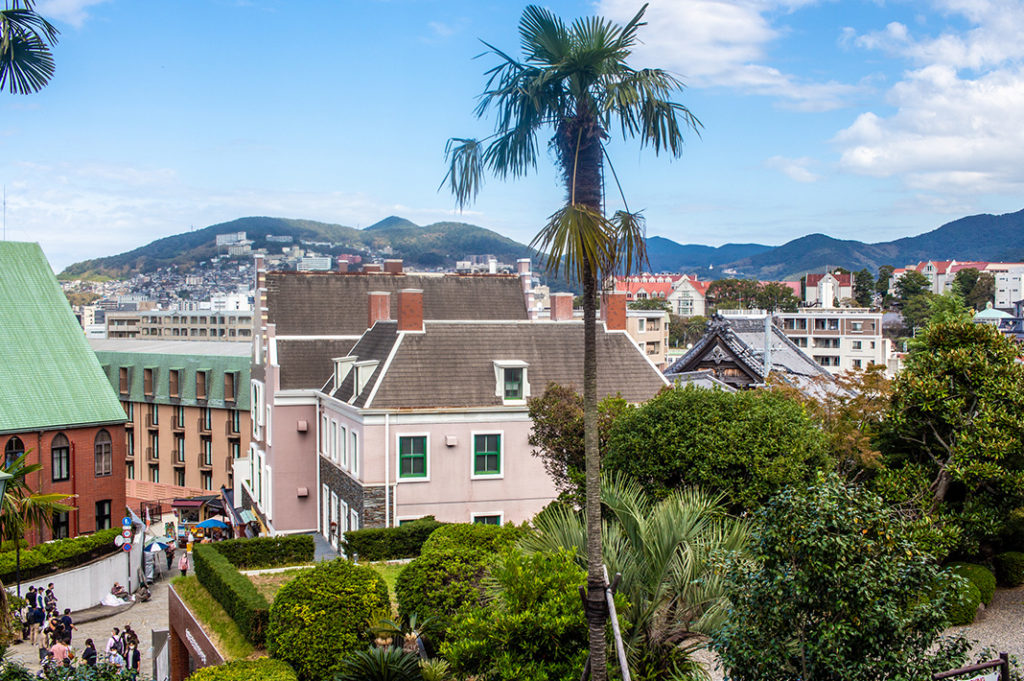
While the view is largely the same as ever, Oura Church has grown and changed from its original, smaller, self. The damage sustained during the 1945 Nagasaki atomic bombing required extensive repairs. For example, the current windows were made from other stained glass from the same period.
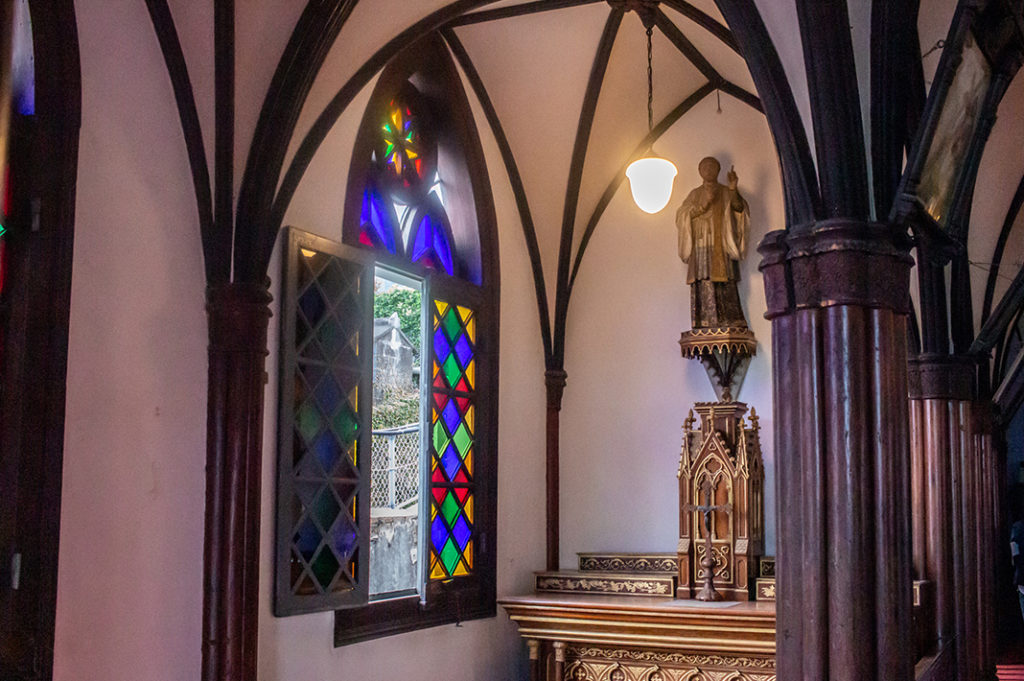
Inside the church, people sit in the pews gazing around and up to the gorgeous vaulted cathedral ceilings. The dark and light tones create a powerful atmosphere, made more magical by the colourful light shining through the stained glass windows.
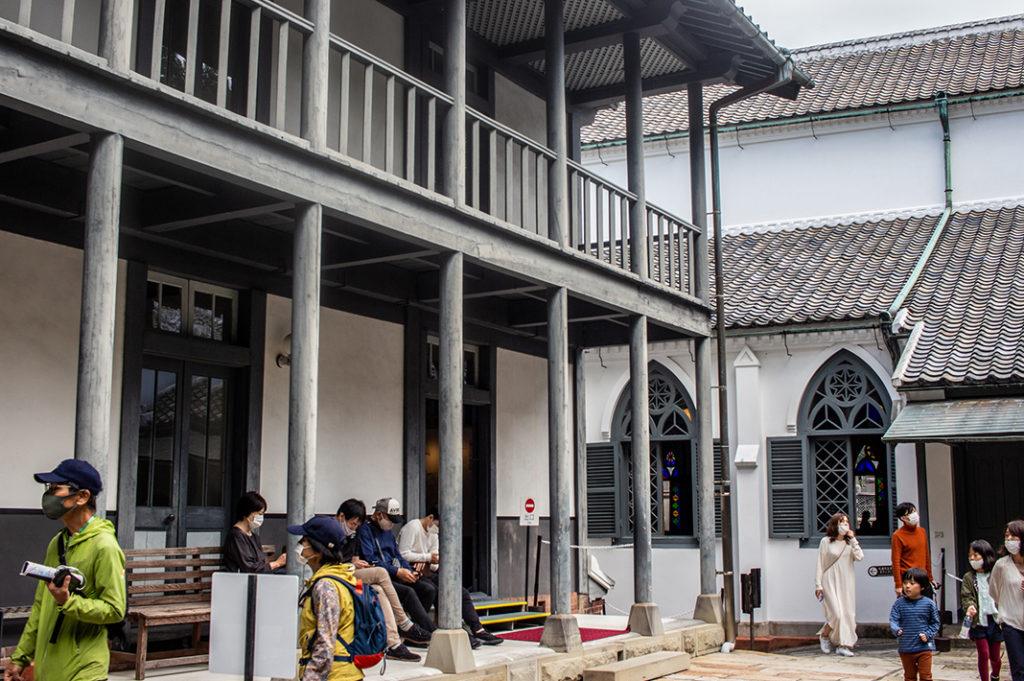
The Museum
Aside from viewing the church itself, there is also a Christian Museum located beside it, in the former Latin Seminary and former Archbishop’s residence. Included in the entry price, the exhibits tell of the long and complicated story of Christianity in Japan. Much of the text is in Japanese, though it’s still worth a look to see the images and artefacts.
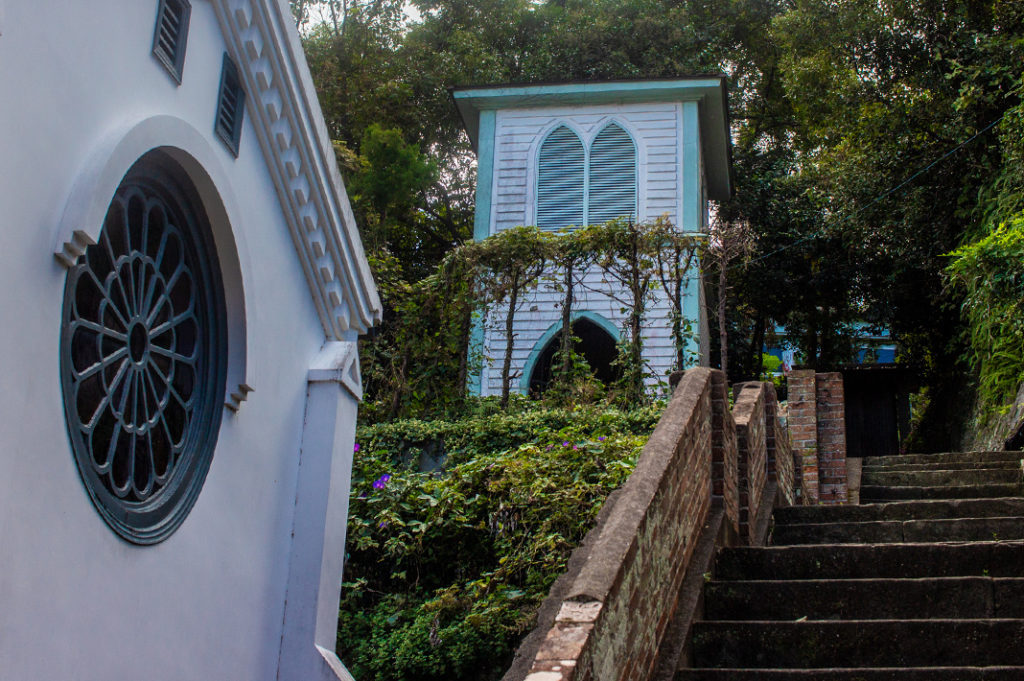
Even for those of us who aren’t religious, the history of Christianity in Japan is a fascinating and harrowing tale. When visiting Oura Church, spare a thought for those who died in order for places like this to exist.
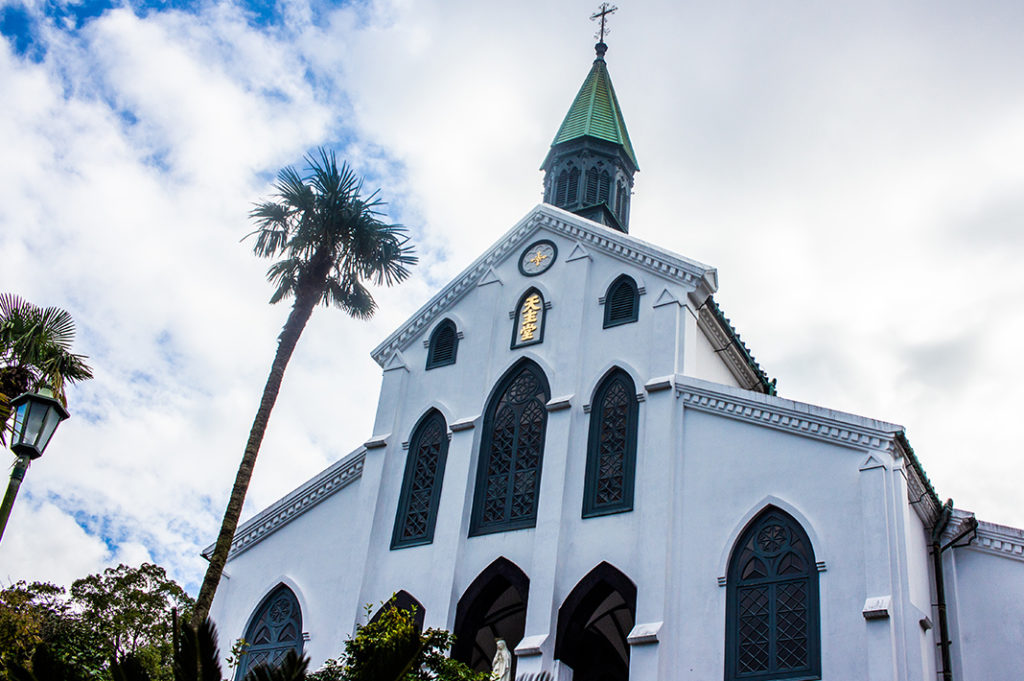
Access
From Nagasaki Station, take tram number 5 to Ouratenshudo tram station. It’s a pleasant five-minute walk to the church, past lots of great little souvenir stores. While in the area, consider visiting Glover Garden to learn more of the foreign residents of Nagasaki.
Read more about Nagasaki’s tram system here.
Name: Oura Church
Address: 5-3 Minamiyamatemachi, Nagasaki, 850-0931 (link)
Open: 8:30am – 5:00pm
URL: web



